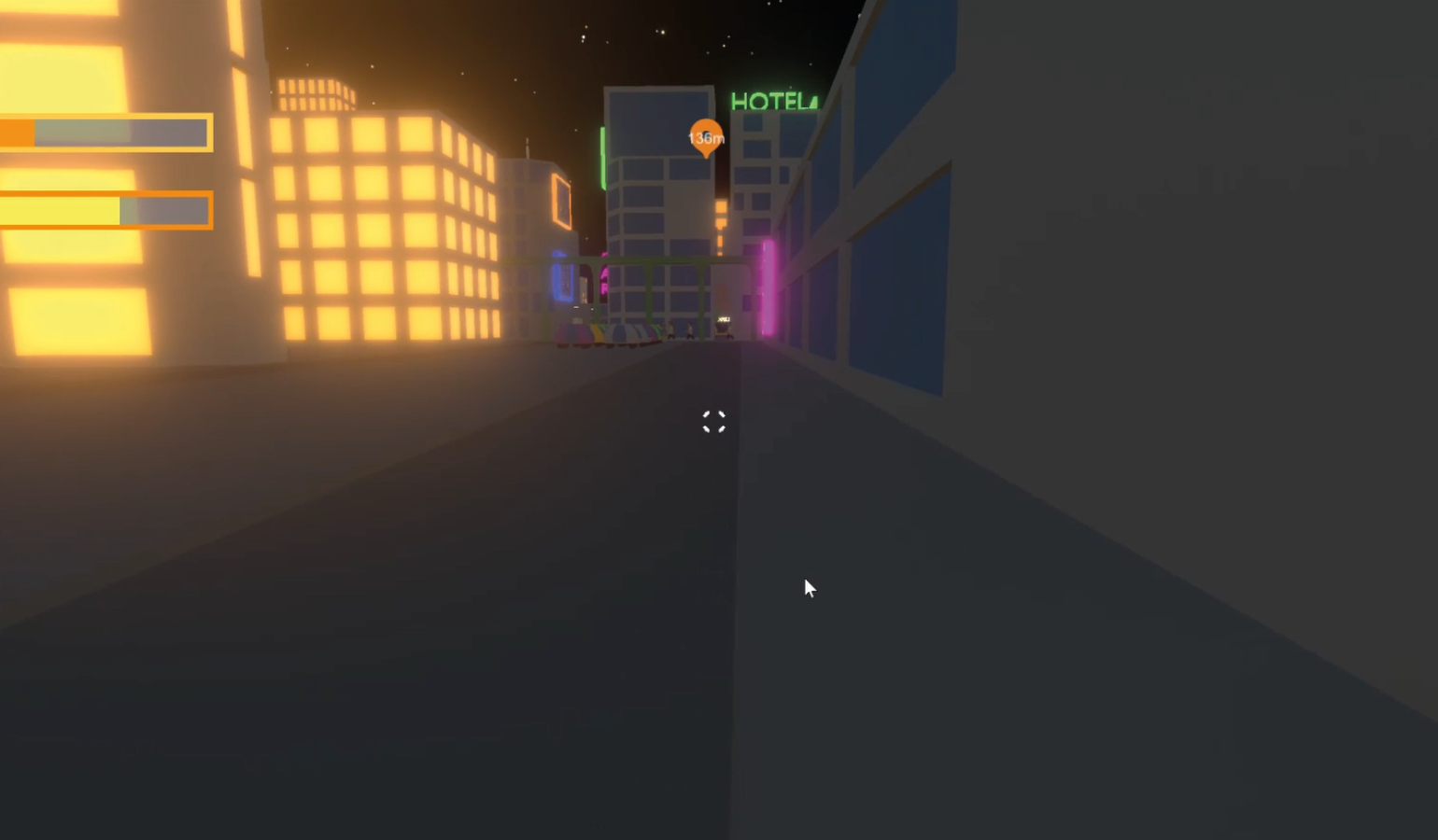
Video Game:
Broken Down
Overview
For a school project, My team and I were tasked to create a video game that takes place in a city that tackles one or multiple dilemmas in the year 2050. This assignment was created with the idea to have us speculate about “the resilient city of 2050” based on our own conducted research. The involvement, consequences, and a city’s viability based on robots on the work floor were chosen for this particular project.
Grade Story: 8.1/10
Role
Story Designer and Product Owner
Team
- Art Director
- Sound Designer & Scrum Master
- 3D Designer
- Game Programmer

The video game had to include a playable scene that captured the essence of the story best. However, the entire game had to be mapped out story-wise. Although the future of the chosen city had to be based on current trends in the robotics field, this task also applied to the architectural development of the city and its citizens' way of life. The story’s main focus was making people think with the use of dilemmas surrounding robots at work in the 2050 scenario.
Ulsan was chosen based on research surrounding fast-developing cities and their current use of robots. Furthermore, studying Korean culture showed that the main focus of many Korean parents is their children’s success. These children are expected to uphold the family’s reputation and improve it. This led to the leading motivation of the main character. In addition to research about the culture, research was conducted about the negative and positive consequences of robots. During the first round of testing, it was concluded that the game pushed a significantly negative narrative whereas this was not the narrative the game was meant to push. This problem became the main focus when the story got further mapped out and written.


The following feedback session revealed that despite the dialogue of the playable scene conveying the story and desirable narrative well, the game was boring. This led to a significant change in gameplay. Instead of a scene where the player could only interact with an NPC (Non-Playable Character), listen, and talk to them, the player could now also interact with posters, graffiti, robots, and other NPCs. Moreover, the feature to play minigames was added by the game’s programmer. Finally, the name “Broken Down” was chosen for the game, referencing the broken-down robots and the mental state of the main character.
As story designer, I was responsible for creating the storyboard. This was hard since the decision was made to let the choices the player makes influence the ending of the main character; I had to come up with multiple endings and make it all connect. This is a harsh sketch that merely captures the stages the player would go through and its challenges




It was also the story designer's task to create a game trailer for the game. The choice was made to focus on the story rather than the gameplay itself since the game is also more focused on storytelling. You can watch the trailer here:

Broken Down allows the player to learn about the consequences of robots at work, and form or tweak their opinion about them. The main character gets hired as a “robot problem solver”, a position that solves problems created by robots. Whilst the player solves these problems, they constantly get reminded of their societal expectations of them through text by their parents and boss.
For example, at the beginning of the playable scene, the player gets a text from both their parents and their boss that they, and the rest of their social group, will be extremely disappointed in the player if they fail to do their job and that if they fail, they will lose it. This will be followed by an ethical dilemma where the player will be asked to fire a poor shop owner, who will lose everything if fired, to get replaced by a robot. These kinds of ethical dilemmas will take place throughout the game and affect the player’s ending.

